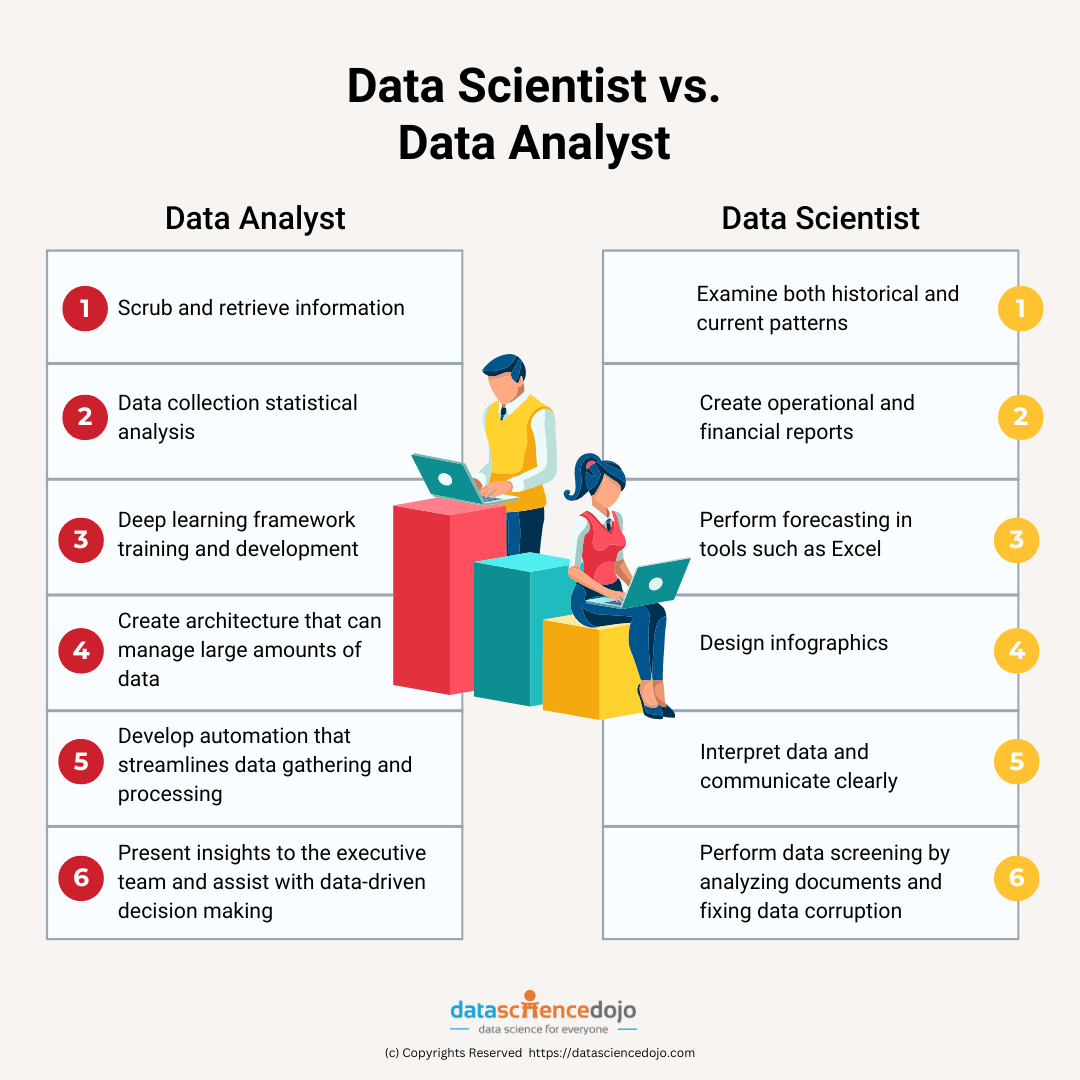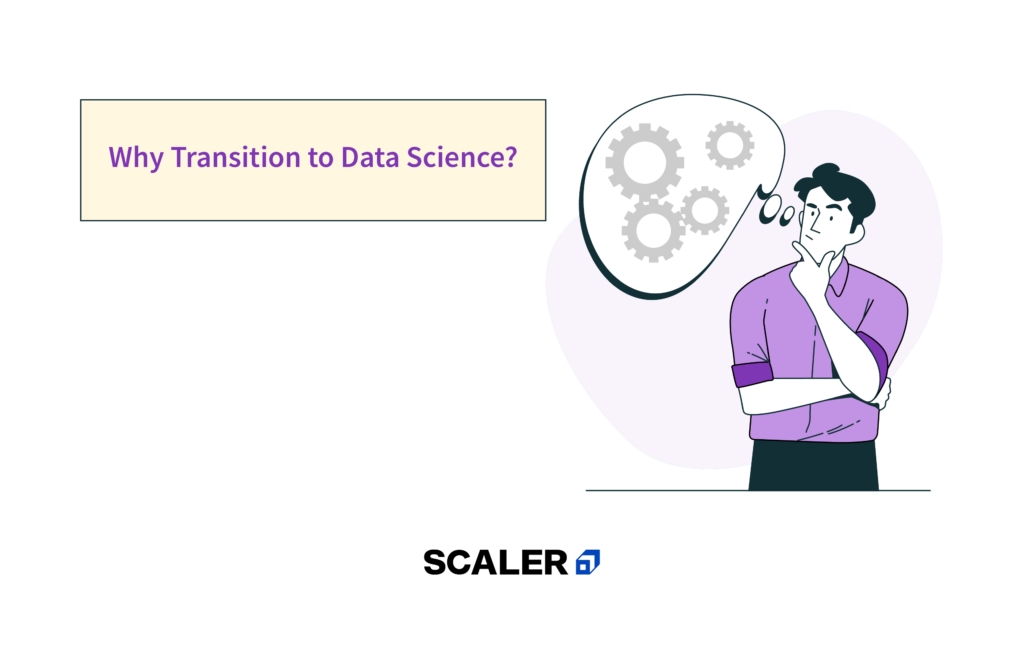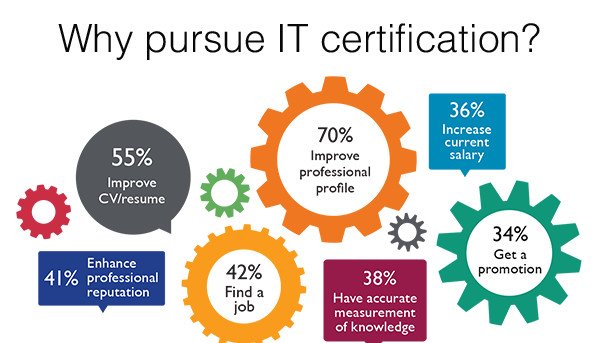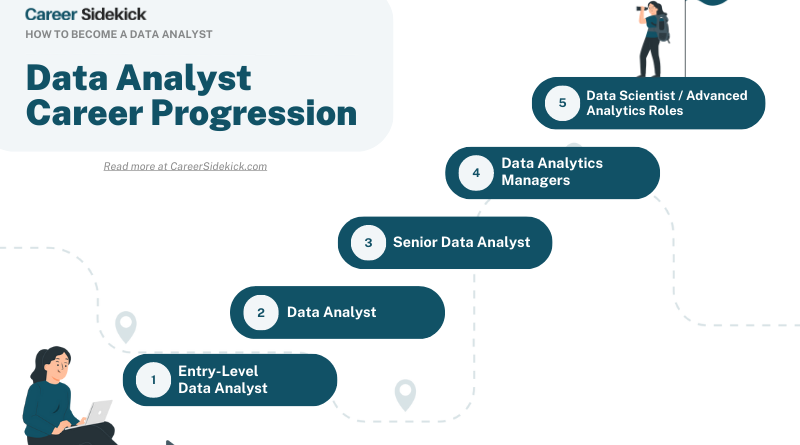From Data Analyst to Data Scientist: Navigating Your Career Path

The transition from a data analyst to a data scientist is both a challenging and rewarding journey. While these roles overlap in their focus on data-driven insights, they diverge significantly in the skills, tools, and impact they bring to organizations. This article will explore the key differences between these roles, the essential skills and tools needed for the transition, and strategies to successfully navigate this career progression.
Understanding the Roles: Data Analyst vs. Data Scientist
Data Analyst
Data analysts focus on interpreting data to provide actionable insights. They typically work on structured data, using tools like Excel, SQL, and Tableau to create reports, dashboards, and visualizations. Their role often involves descriptive and diagnostic analysis, answering questions such as “What happened?” and “Why did it happen?”
Key Responsibilities:
- Data cleaning and preparation.
- Generating reports and dashboards.
- Identifying trends and patterns.
- Collaborating with business teams to interpret data.

Data Scientist
Data scientists, on the other hand, delve deeper into predictive and prescriptive analytics. They utilize advanced statistical methods, machine learning models, and big data tools to answer questions like “What will happen?” and “What should we do about it?” Data scientists are often involved in developing algorithms, building predictive models, and automating data-driven decision-making processes.
Key Responsibilities:
- Building and deploying machine learning models.
- Experimentation and hypothesis testing.
- Working with unstructured data such as text, images, and video.
- Developing scalable data pipelines.
Why Transition to Data Science?
- Broader Impact: Data scientists often work on projects that have a direct impact on business strategy, such as customer segmentation, fraud detection, or predictive maintenance.
- Higher Earning Potential: Data scientists generally command higher salaries due to their specialized skill set.
- Intellectual Challenge: The role involves more complex problem-solving and the opportunity to work with cutting-edge technologies.

Essential Skills for the Transition
1. Programming and Scripting
While data analysts often rely on SQL and BI tools, data scientists must be proficient in programming languages like Python or R. These languages allow for data manipulation, statistical analysis, and building machine learning models.
- Key Libraries for Python:
- Pandas: For data manipulation.
- NumPy: For numerical computing.
- Scikit-learn: For machine learning.
- TensorFlow/PyTorch: For deep learning.

2. Statistical and Mathematical Foundations
A strong understanding of statistics and probability is essential for building models that generalize well. Key areas include:
- Hypothesis testing.
- Linear and logistic regression.
- Bayesian statistics.
- Optimization techniques.
3. Machine Learning
Machine learning is the core of data science. Understanding supervised, unsupervised, and reinforcement learning algorithms is critical. Start with simpler models such as linear regression and decision trees before advancing to complex techniques like ensemble methods, support vector machines, and neural networks.
4. Data Engineering Skills
Data scientists often handle large datasets. Knowledge of data engineering principles, such as ETL (Extract, Transform, Load) processes and working with databases like Hadoop, Spark, or cloud platforms, is advantageous.

5. Domain Knowledge
Understanding the business context is crucial for solving the right problems and delivering insights that drive value. As a data scientist, you should be able to translate technical results into actionable business strategies.
6. Communication and Storytelling
The ability to convey complex results to non-technical stakeholders is a critical skill. This involves creating clear visualizations and narratives that effectively communicate your findings.
Building Your Transition Plan
1. Assess Your Current Skill Set
Begin by evaluating your current strengths as a data analyst. Identify the gaps in your knowledge and skills related to data science. This will help you focus your learning efforts.
2. Develop a Learning Roadmap
Here’s a suggested roadmap for transitioning from data analyst to data scientist:

- Step 1: Learn a Programming Language
If you don’t already know Python or R, start with the basics and gradually move to advanced topics. - Step 2: Master Machine Learning
Take online courses or read books on machine learning. Platforms like Coursera, edX, and DataCamp offer excellent courses tailored for beginners and intermediate learners. - Step 3: Build Projects
Apply your learning by working on real-world projects. Kaggle is a great platform for participating in data science competitions and building a portfolio. - Step 4: Study Data Engineering
Gain hands-on experience with tools like Apache Spark, Kafka, and cloud services (AWS, GCP, Azure). - Step 5: Advanced Analytics and Deep Learning
Once you’re comfortable with basic machine learning, explore advanced topics like deep learning, natural language processing (NLP), and computer vision.
3. Pursue Certifications
Certifications can validate your skills and boost your credibility. Consider pursuing:
- IBM Data Science Professional Certificate.
- Google Professional Data Engineer.
- AWS Certified Machine Learning Specialty.

4. Leverage Internal Opportunities
If you’re currently employed, seek opportunities within your organization to work on data science projects. Collaborate with data scientists, express your interest in transitioning, and take on tasks that require more advanced analytical skills.
5. Network and Learn from Others
Join data science communities, attend meetups, and participate in hackathons. Networking can provide mentorship opportunities and open doors to new job prospects.
Overcoming Common Challenges
1. Data Quality and Availability
Data science often involves working with messy, incomplete, or unstructured data. Developing strong data wrangling skills is essential.
2. Algorithmic Bias
Bias in data and algorithms can lead to unfair or inaccurate predictions. As a data scientist, it’s crucial to recognize and mitigate these biases.

3. Keeping Up with Technological Advances
The field of data science evolves rapidly. Continuous learning is necessary to stay updated with new tools, techniques, and best practices.
4. Bridging the Technical-Business Gap
One of the biggest challenges is ensuring that your models and insights are aligned with business objectives. Effective communication and stakeholder management skills can bridge this gap.
Measuring Your Progress

As you work towards becoming a data scientist, it’s important to track your progress. Here are some key milestones to consider:
- Completing your first machine learning project.
- Publishing a portfolio on GitHub or Kaggle.
- Successfully applying for data science roles or transitioning within your current organization.
- Receiving recognition for your contributions to data-driven projects.
Case Study: Successful Transition
Background: Alex, a data analyst at a mid-sized retail company, was responsible for generating sales reports and dashboards. He was keen on transitioning to a data scientist role to work on predictive analytics.

Approach:
- Skill Development: Alex started learning Python and completed several machine learning courses online.
- Project Work: He identified a business problem—predicting customer churn—and worked on building a predictive model.
- Collaboration: Alex collaborated with the data science team to deploy his model.
- Outcome: His efforts led to a reduction in churn rate by 15%. Eventually, Alex was promoted to a junior data scientist role.
Key Takeaway: Real-world projects, collaboration, and continuous learning are instrumental in transitioning from data analyst to data scientist.
Conclusion
The journey from data analyst to data scientist is a transformative one, requiring a commitment to continuous learning and skill development. By mastering programming, machine learning, and data engineering, and applying these skills to real-world problems, you can position yourself for success in this dynamic and high-impact field. The key is to remain curious, adaptable, and focused on delivering value through data-driven insights.




